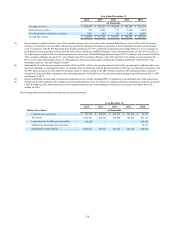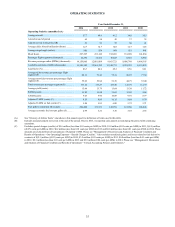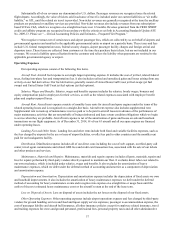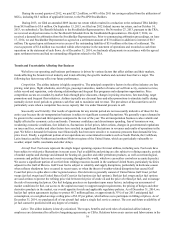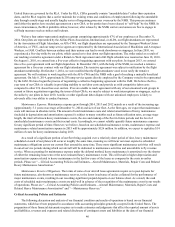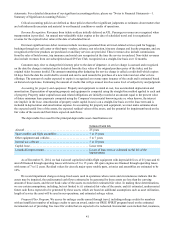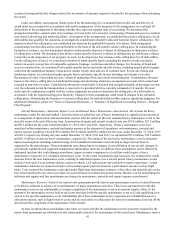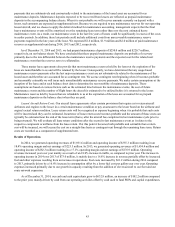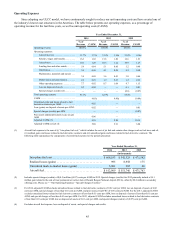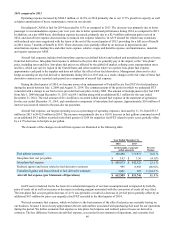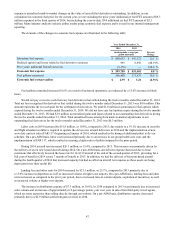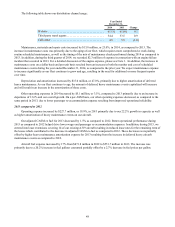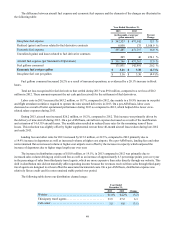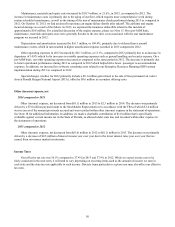Spirit Airlines 2014 Annual Report Download - page 40
Download and view the complete annual report
Please find page 40 of the 2014 Spirit Airlines annual report below. You can navigate through the pages in the report by either clicking on the pages listed below, or by using the keyword search tool below to find specific information within the annual report.40
United States are governed by the RLA. Under the RLA, CBAs generally contain “amendable dates” rather than expiration
dates, and the RLA requires that a carrier maintain the existing terms and conditions of employment following the amendable
date through a multi-stage and usually lengthy series of bargaining processes overseen by the NMB. This process continues
until either the parties have reached agreement on a new CBA, or the parties have been released to “self-help” by the NMB. In
most circumstances, the RLA prohibits strikes; however, after release by the NMB, carriers and unions are free to engage in
self-help measures such as strikes and lockouts.
We have four union-represented employee groups comprising approximately 67% of our employees at December 31,
2014. Our pilots are represented by the Airline Pilots Association, International, or ALPA, our flight attendants are represented
by the Association of Flight Attendants, or AFA-CWA, our flight dispatchers are represented by the Transport Workers Union
of America, or TWU, and our ramp service agents are represented by the International Association of Machinists and Aerospace
Workers, or IAM. Conflicts between airlines and their unions can lead to work slowdowns or stoppages. In June 2010, we
experienced a five-day strike by our pilots, which caused us to shut down our flight operations. The strike ended as a result of
our reaching a tentative agreement under a Return to Work Agreement and a full flight schedule was resumed on June 18, 2010.
On August 1, 2010, we entered into a five-year collective bargaining agreement with our pilots. In August 2013, we entered
into a five-year agreement with our flight dispatchers. In December 2013, with the help of the NMB, we reached a tentative
agreement for a five-year contract with our flight attendants. The tentative agreement was subject to ratification by the flight
attendant membership. On October 1, 2014, we were notified that the flight attendants voted to not ratify the tentative
agreement. We will continue to work together with the AFA-CWA and the NMB with a goal of reaching a mutually beneficial
agreement. On July 8, 2014, approximately 250 ramp service agents directly employed by the Company voted to be represented
by the IAM. We have begun the process of negotiating a collective bargaining agreement with the IAM. We believe the five-
year term of our CBAs is valuable in providing stability to our labor costs and provide us with competitive labor costs
compared to other U.S.-based low-cost carriers. If we are unable to reach agreement with any of our unionized work groups in
current or future negotiations regarding the terms of their CBAs, we may be subject to work interruptions or stoppages, such as
the strike by our pilots in June 2010. A strike or other significant labor dispute with our unionized employees is likely to
adversely affect our ability to conduct business.
Maintenance Expense. Maintenance expense grew through 2014, 2013 and 2012 mainly as a result of the increasing age
(approximately 5.1 years on average at December 31, 2014) and size of our fleet. As the fleet ages, we expect that maintenance
costs will increase in absolute terms. The amount of total maintenance costs and related amortization of heavy maintenance
(included in depreciation and amortization expense) is subject to many variables such as future utilization rates, average stage
length, the interval between heavy maintenance events, the size and makeup of the fleet in future periods and the level of
unscheduled maintenance events and their actual costs. Accordingly, we cannot reliably quantify future maintenance expenses
for any significant period of time. However, we believe, based on our scheduled maintenance events, maintenance expense and
maintenance-related amortization expense in 2015 will be approximately $126 million. In addition, we expect to capitalize $14
million of costs for heavy maintenance during 2015.
As a result of a significant portion of our fleet being acquired over a relatively short period of time, heavy maintenance
scheduled on each of our planes will occur at roughly the same time, meaning we will incur our most expensive scheduled
maintenance obligations across our current fleet around the same time. These more significant maintenance activities will result
in out-of-service periods during which our aircraft will be dedicated to maintenance activities and unavailable to fly revenue
service. When accounting for maintenance expense under the deferral method, heavy maintenance is amortized over the shorter
of either the remaining lease term or the next estimated heavy maintenance event. This will result in higher depreciation and
amortization expense related to heavy maintenance in the last few years of the leases as compared to the costs in earlier
periods. Please see “—Critical Accounting Policies and Estimates—Aircraft Maintenance, Materials, Repair Costs and Related
Heavy Maintenance Amortization.”
Maintenance Reserve Obligations. The terms of some of our aircraft lease agreements require us to post deposits for
future maintenance, also known as maintenance reserves, to the lessor in advance of and as collateral for the performance of
major maintenance events, resulting in our recording significant prepaid deposits on our balance sheet. As a result, the cash
costs of scheduled major maintenance events are paid well in advance of the recognition of the maintenance event in our results
of operations. Please see “—Critical Accounting Policies and Estimates—Aircraft Maintenance, Materials, Repair Costs and
Related Heavy Maintenance Amortization” and “—Maintenance Reserves.”
Critical Accounting Policies and Estimates
The following discussion and analysis of our financial condition and results of operations is based on our financial
statements, which have been prepared in accordance with accounting principles generally accepted in the United States. The
preparation of these financial statements requires us to make estimates and judgments that affect the reported amount of assets
and liabilities, revenues and expenses and related disclosure of contingent assets and liabilities at the date of our financial






